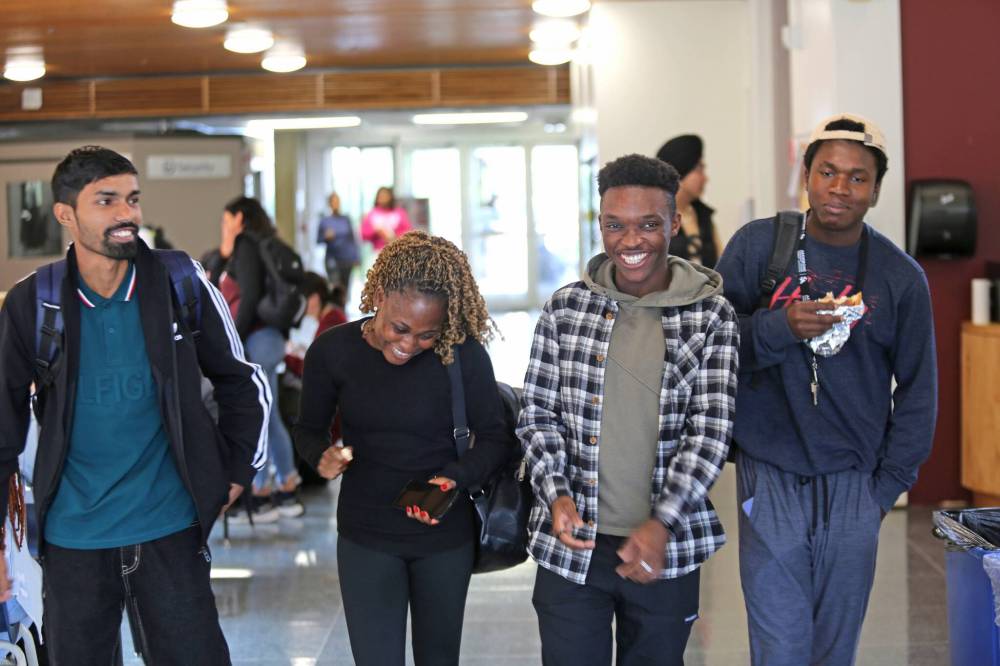Brandon sees drop in international students
Advertisement
Read this article for free:
or
Already have an account? Log in here »
We need your support!
Local journalism needs your support!
As we navigate through unprecedented times, our journalists are working harder than ever to bring you the latest local updates to keep you safe and informed.
Now, more than ever, we need your support.
Starting at $15.99 plus taxes every four weeks you can access your Brandon Sun online and full access to all content as it appears on our website.
Subscribe Nowor call circulation directly at (204) 727-0527.
Your pledge helps to ensure we provide the news that matters most to your community!
To continue reading, please subscribe:
Add Brandon Sun access to your Winnipeg Free Press subscription for only
$1 for the first 4 weeks*
*$1 will be added to your next bill. After your 4 weeks access is complete your rate will increase by $4.99 a X percent off the regular rate.
Read unlimited articles for free today:
or
Already have an account? Log in here »
Hey there, time traveller!
This article was published 12/09/2024 (387 days ago), so information in it may no longer be current.
International student enrolment at Brandon University has seen a decline in the current academic year, reflecting a broader trend across Canadian post-secondary institutions.
At Assiniboine College, early indications suggest that new international student enrolment for upcoming terms may also be down.
Brandon University marketing and communications director Grant Hamilton said international student numbers have fallen by about 100 this year.

“Like institutions across the country, international student numbers are down at BU,” he told the Sun in an email. “The number dropped to 421 this year from 528 last year.”
In January, Immigration Minister Marc Miller announced new visas for international students would be slashed by more than one-third this year. Affordability and housing are top items on Ottawa’s agenda, he said, with a growing focus on the role record immigration has been playing in both.
Miller said the two-year cap would give federal and provincial governments time to tackle problems in the student visa system that have allowed some bad actors to take advantage of high international student tuition while providing poor education.
Hamilton explained student numbers are still in flux, adding the university does not do a final “census” until November, as students can still add or drop classes for a few weeks.
Comparing Sept. 1 this year to last year, the numbers show some trends.
“First-year international student numbers are down, but the federal changes do not impact second-year and above international students, so those students are largely back,” he said. “And we are seeing modest increases in our registrations from domestic students, in particular from Indigenous students.”
However, the overall impact to the university’s student numbers appears modest, he added.
“BU’s total student numbers are down by only about 50 year-over-year (from 3,150 last year to 3,095 this year).”
Despite the decline, BU anticipates total student numbers will increase by between 150 and 200 by the time final census data is collected in November, he said.
BU president David Docherty, in his report during the board of governors meeting in May, said international student applications had decreased to the lowest figure in the past five years.
“International applications dropped by 51 per cent and admission offers are down 91 per cent compared to the same time last year, the lowest point in five years,” he stated. “To date, we have used 29 of our available 664 provincial attestations.”
Regarding the applicant countries, Docherty said applications from Nigeria, historically the university’s primary international feeder country, had dropped significantly.
“Applications from Nigeria dropped by 60 per cent compared to last year. While Nigerian applicants previously made up more than half of international applications, they now comprise 44.7 per cent of the current total,” he said.
“Applications from Ghana, the second-highest feeder country, had also decreased by 33.7 per cent, though these figures were still higher than any year before 2023, accounting for 31.5 per cent of international applications.”
Despite the overall decline, Docherty said 77.2 per cent of international applications continued to come from Nigeria and Ghana.
At Assiniboine College, the situation is still evolving.
Vice-president for enrolment Danielle Adriaansen said it’s too early in the academic year to determine whether international student enrolment will be up, down or roughly the same as prior years.

While international student enrolment is up for the fall term, she said, tuition deposits to date “are indicating that new international student enrolment for upcoming terms may be down compared to last year.”
She added the college has seen an overall reduction in enrolment for all students compared to last fall.
The post-secondary institutions attributed the trend to a combination of factors.
Hamilton said much of the decline was caused by the significant study permit and related changes made by IRCC in recent months.
“The federal government felt they needed to tackle some very reasonable concerns in Ontario and some other provinces, but their approach is having an unfortunate impact here in Manitoba.”
BU also implemented a mandatory deposit for international students to reduce the tremendous volume of applications, “which created enormous workload challenges in the Admissions office as they processed thousands of applications from students who did not end up ever coming to Brandon University to study,” Hamilton said.
Adriaansen said federal policy change to the international student program “and anticipated changes still to come may result in less interest from international students to study in Canada, as students may be waiting to make their decisions about applying for programs.”
She added: “We also continue to see study permit denials close to the start date of programs, which impacts enrolment.”
Adriaansen attributed the overall reduction of student enrolment to the sunsetting of partnership programs with Robertson College in Winnipeg, “and no new students beginning in these programs.”
Assiniboine, she said, is assessing the potential financial impact of a decline in international student numbers, using a cost-recovery model.
“We are able to expand seat capacity in many of our provincially funded programs or establish entirely new programs, which means that additional seats beyond what we are funded for are paid for fully by the tuition and fee costs,” she said.
“A decline in international enrolment jeopardizes the ability for some programs to run, and in turn, would actually decrease the number of seats available to domestic students, should they be in a cost-recovery offering.”
» aodutola@brandonsun.com
» X: @AbiolaOdutola
